
 i_need_contribute
i_need_contribute
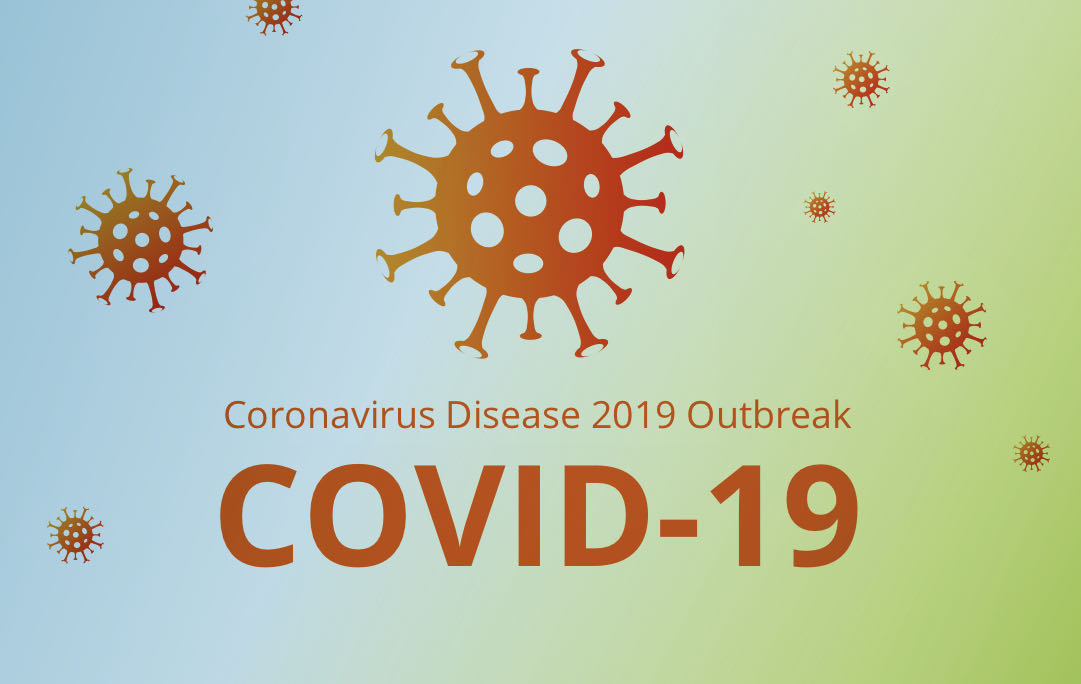
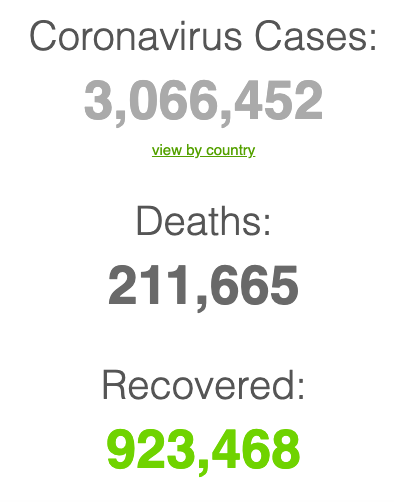

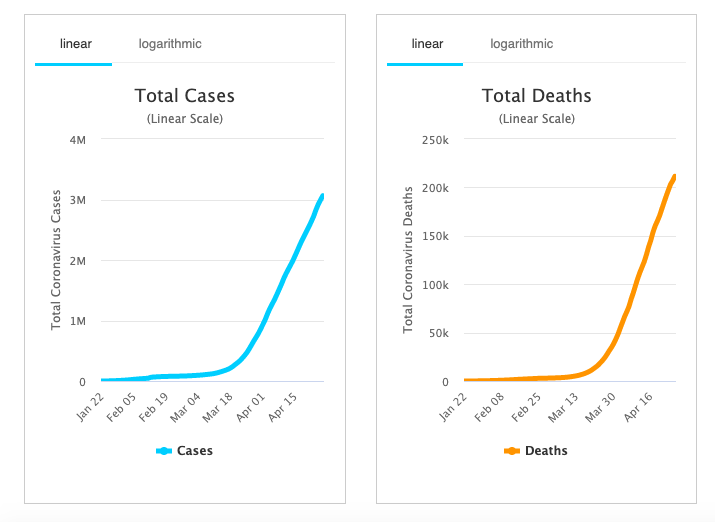
|
Country, |
Total |
New |
Total |
|
World |
3,062,515 |
+69,223 |
211,449 |
|
1,010,356 |
+23,196 |
56,797 |
|
|
229,422 |
+2,793 |
23,521 |
|
|
199,414 |
+1,739 |
26,977 |
|
|
165,842 |
+3,742 |
23,293 |
|
|
158,758 |
+988 |
6,126 |
|
|
157,149 |
+4,309 |
21,092 |
|
|
112,261 |
+2,131 |
2,900 |
|
|
91,472 |
+991 |
5,806 |
|
|
87,147 |
+6,198 |
794 |
|
|
82,830 |
+3 |
4,633 |
|
|
66,501 |
+3,642 |
4,543 |
|
|
48,500 |
+1,605 |
2,707 |
|
|
46,687 |
+553 |
7,207 |
|
|
38,245 |
+400 |
4,518 |
|
|
29,451 |
+1,561 |
939 |
|
|
29,164 |
+103 |
1,665 |
|
|
28,699 |
+1,182 |
782 |
|
|
24,027 |
+163 |
928 |
|
|
23,240 |
+521 |
663 |
|
|
19,648 |
+386 |
1,102 |
|
|
18,926 |
+286 |
2,274 |
|
|
18,811 |
+1,289 |
144 |
|
|
15,555 |
+112 |
204 |
|
|
15,274 |
+49 |
549 |
|
|
14,677 |
+835 |
1,351 |
|
|
14,423 |
+799 |
14 |
|
|
13,915 |
+587 |
292 |
|
|
13,813 |
+482 |
198 |
|
|
13,614 |
+165 |
385 |
|
|
11,902 |
+285 |
562 |
|
|
11,339 |
+303 |
641 |
|
|
11,289 |
+826 |
75 |
|
|
11,244 |
+957 |
10 |
|
|
10,839 |
+490 |
82 |
|
|
10,738 |
+10 |
243 |
|
|
9,096 |
+214 |
765 |
|
|
9,009 |
+392 |
220 |
|
|
8,698 |
+123 |
427 |
|
|
8,275 |
+233 |
162 |
|
|
7,777 |
+198 |
511 |
|
|
7,599 |
+72 |
205 |
|
|
7,445 |
+41 |
223 |
|
|
6,720 |
+4 |
83 |
|
|
6,293 |
+158 |
282 |
|
|
5,913 |
+497 |
152 |
|
|
5,820 |
+40 |
99 |
|
|
5,779 |
+241 |
165 |
|
|
5,597 |
+218 |
253 |
|
|
4,793 |
+247 |
90 |
|
|
4,782 |
+248 |
337 |
|
|
4,695 |
+119 |
193 |
|
|
4,120 |
+55 |
162 |
|
|
4,003 |
+111 |
197 |
|
|
3,729 |
+6 |
88 |
|
|
3,517 |
+135 |
432 |
|
|
3,481 |
+73 |
102 |
|
|
3,288 |
+213 |
22 |
|
|
2,931 |
+9 |
52 |
|
|
2,835 |
+118 |
25 |
|
|
2,723 |
+76 |
8 |
|
|
2,583 |
+83 |
280 |
|
|
2,534 |
+17 |
136 |
|
|
2,049 |
+51 |
10 |
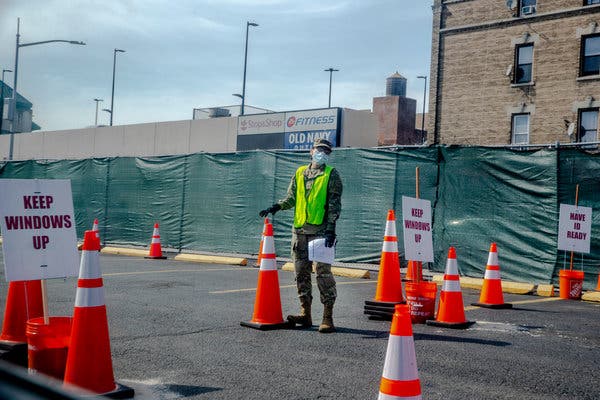
The entrance to a testing facility in Brooklyn on Saturday.Credit...Brittainy Newman/The New York Times
President Trump, under growing pressure to expand testing as states move to reopen their economies, unveiled a plan on Monday to ramp up the federal government’s help to states, but his proposal runs far short of what most public health experts say is necessary.
The announcement came after weeks of the president insisting, inaccurately, that the nation’s testing capability was “fully sufficient to begin opening up the country.”
The New York Times
President Trump suggested to the nation’s governors on Monday that some should move to reopen their public schools before the end of the academic year, an indication that he is growing impatient with the widespread closures to curb the coronavirus outbreak.
“Some of you might start to think about school openings,” Mr. Trump said on a conference call with the governors, according to an audio recording obtained by The New York Times. “The young children have done very well in this disaster that we’ve all gone through, so a lot of people are thinking about the school openings.”
Addressing Vice President Mike Pence, who was also on the call, Mr. Trump added, “I think it’s something, Mike, they can seriously consider and maybe get going on it.”
The president’s nudge on school openings runs counter to the advice of medical experts and came unbidden during a conversation about testing and respirator use.
Mr. Trump reiterated his desire to see schools open Monday evening at the White House, saying, “I think you’ll see a lot of schools open up, even for a short period of time.”

A Waffle House in Madison, Ga., reopened for in-house dining on Monday.Credit...Maranie Staab/Reuters
Many business owners in states that are easing restrictions and allowing some businesses to reopen said they were uncertain about all the new rules, and were trying to make sense of a cacophony of messages from President Trump, governors, county commissioners and mayors.
“I couldn’t sleep last night because I was so confused,” Jose Oregel, who owns a barbershop in Greeley, Colo., said on Monday morning, an hour before he was expecting his first customers, who will get haircuts from barbers wearing masks and gloves.
In Colorado, real estate showings were allowed to restart on Monday as the governor’s stay-at-home order expired, and pet owners were able to take their animals to the vet for nonemergency operations. At the same time, Denver and many surrounding suburbs extended their closure orders.
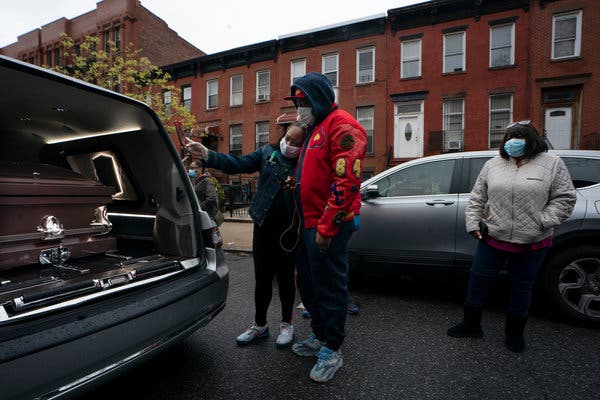
Family members with the coffin of a relative in Brooklyn on Friday.Credit...James Estrin/The New York Times
More than 50,000 people have died from the virus in the United States, which has more confirmed cases and deaths than any other nation, according to a tally by The New York Times.
And as the outbreak spread, the nation’s total number of confirmed cases continued to climb toward one million, reaching more than 987,000.
Those bleak milestones are yet more reminders of the toll in America as the virus has taken lives, destroyed families, spread through meat plants, prisons and nursing homes, and caused more than 26 million people to lose their jobs in the past five weeks.
The tally does not include more than 5,200 people in New York City and smaller numbers in other states and U.S. territories who died and are believed to have had the virus. Many of those patients were not tested, a consequence of a strained medical system and a persistent lack of testing capacity.
Even as case numbers have stabilized in some hard-hit cities, including New Orleans and Seattle, other places have seen growth.
The New York Times
Less than an hour after the Small Business Administration on Monday morning resumed taking requests for another $310 billion in emergency aid for small businesses, its computer system for processing the loan applications crashed.
“It’s obvious the system is simply flooded right now,” said Craig Street, the chief lending officer at United Midwest Savings Bank in Columbus, Ohio. “It’s been very stop and start, with no real way to know whether it is working other than to keep hitting the submit button.”
It was a rocky resumption for the Paycheck Protection Program, a stimulus initiative that offers small companies forgivable loans to cover their payrolls. The program began early this month, but its initial round of funding — $342 billion — was depleted in 13 days and the agency stopped accepting requests, leaving hundreds of thousands of borrowers frozen out until Congress provided a new funding round last week. The government began accepting applications for it at 10:30 a.m. on Monday.

Health care workers walking past NYU Langone Medical Center in Manhattan last week.Credit...Demetrius Freeman for The New York Times
The Centers for Disease Control and Prevention has added six possible symptoms of the virus to its list, a step that reflects the broad variation and unpredictability of the effects of the illness.
Echoing the observations of doctors treating thousands of patients, the federal health agency this month changed its website to cite chills, repeated shaking with chills, muscle pain, headache, sore throat and new loss of taste or smell as possible indicators of Covid-19.
The C.D.C. had listed just three symptoms: fever, cough and shortness of breath. The agency made no public announcement when it added the new symptoms to its website on April 18, and it did not immediately respond to questions about the revised list.

President Trump during a White House briefing last week.Credit...Doug Mills/The New York Times
Never mind. Less than two hours after the White House canceled the daily coronavirus news briefing, it rescheduled it, saying that the president would make an announcement on testing.
“The White House has additional testing guidance and other announcements about safely opening up America again,” Kayleigh McEnany, the White House press secretary, wrote on Twitter. “President @realDonaldTrump will brief the nation during a press conference this evening.”
The White House scheduled the newly slated news conference for the Rose Garden at 5 p.m., the same time the briefing was originally scheduled before it was canceled shortly before lunch. Some of Mr. Trump’s aides and allies had expressed concern that the briefings had become a liability for the president, and he himself said over the weekend that they were “not worth the time & effort.” But Mr. Trump has rarely resisted news media appearances for long.
The New York Times
The House Foreign Affairs Committee on Monday announced it would open an investigation into Mr. Trump’s decision to halt funding to the World Health Organization, calling the move a “political distraction” from the administration’s lackluster response to the pandemic.
“Attacking the W.H.O., rather than the Covid-19 outbreak, will only worsen an already dire situation by undermining one of our key tools to fight the spreading disease,” Representative Eliot L. Engel of New York, the chairman of the Foreign Affairs Committee, wrote in a letter to Secretary of State Mike Pompeo.
Cities across the country are struggling under the economic shadow of the virus. But few have to deal with the collapse of their fundamental industry the way Houston, the self-proclaimed energy capital of the world, has as oil prices have plummeted.
On the same day that the price for U.S. crude oil fell to about $30 below zero — a mind-bending concept that signaled the first time oil prices had ever turned negative — Mayor Sylvester Turner of Houston stood before reporters and delivered the grim news, his words muffled by the black mask covering his face.
City employees would soon be furloughed, the mayor announced, but he declined to say how many. The Houston Zoo, he said, could expect to see funding deferred under what he called “the worst budget that the city will deal with in its history.”
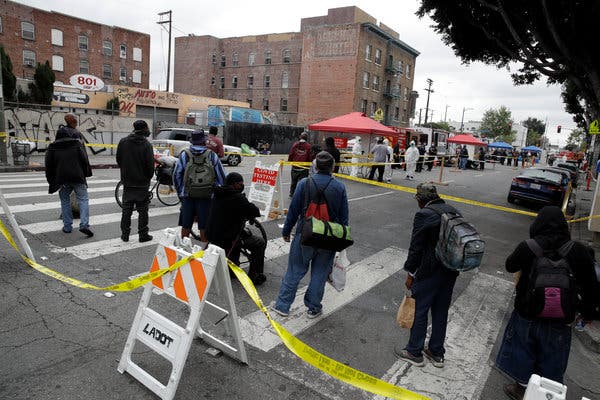
People lined up for coronavirus tests in downtown Los Angeles.Credit...Marcio Jose Sanchez/Associated Press
Residents of poorer areas of Los Angeles County are more than three times more likely to die because of the virus than people in wealthier communities in Southern California, public health officials said.
In a statement on Sunday, the Los Angeles County Department of Public Health said it had recorded 16.5 deaths per 100,000 people in areas where at least 30 percent of residents lived in poverty. The death rate in communities with less poverty was 5.3 per 100,000 people.
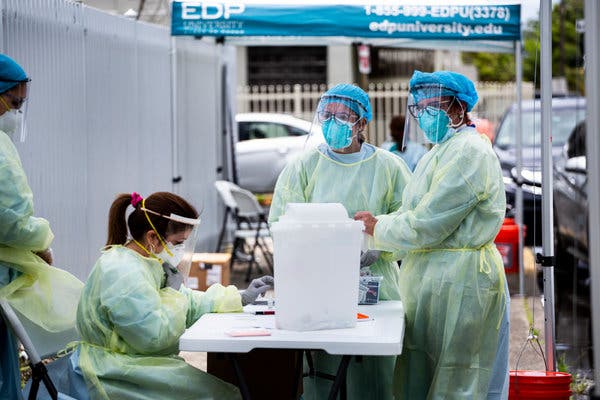
A testing site in San Juan, P.R., on Monday.Credit...Erika P. Rodriguez for The New York Times
A different type of test is required to screen the U.S. population on the necessary scale, Dr. Birx said on Sunday, adding that it would take “a huge technology breakthrough” to get there.
What’s needed, she said on NBC’s “Meet the Press,” is a screening test that detects antigens, like the screening tests used for flu, strep and other diseases. Antigens stimulate the body to produce antibodies, and are essentially evidence of an immune response.
“We have to be able to detect the antigen, rather than constantly trying to detect the actual live virus or the viral particles itself, and to really move into antigen testing,” she said. The current RNA tests, which are more precise but more laborious, would then be used to confirm diagnoses.
Source:https://www.nytimes.com/2020/04/27/us/coronavirus-live.html
From CNN’s Fred Pleitgen in Berlin
Germany’s coronavirus reproduction rate has increased to 1, coming closer to a threshold that Chancellor Angela Merkel has previously warned it must stay under in order for the country to continue pushing the disease back.
On average, one person infected with Covid-19 is now infecting one other person, according to the country's center for disease control and prevention, the Robert Koch Institute. That’s up from a reproduction rate of 0.9 a week ago and 0.7 the week before.
Merkel has previously warned that if the number -- also known as the R0 value -- rises above 1, the country’s health system would eventually be overwhelmed.
She has also said that Germany risks squandering the gains made so far if it loosens physical distancing restrictions too quickly.
Despite the rise in the reproduction number, new infections remain at a relatively moderate level.
The institute reported 1,144 new infections in the past 24 hours, while 163 people died of coronavirus-related symptoms.
From CNN's Helen Regan
Future pandemics are likely to be more frequent, deadly, and will spread more rapidly, unless we stop the widespread destruction of our environment, a group of four leading scientists say.
"There is a single species that is responsible for the COVID-19 pandemic -- us," the group said in a guest article published on the Intergovernmental Science-Policy Platform on Biodiversity and Ecosystem Services (IPBES)'s website.
"We have a small window of opportunity, in overcoming the challenges of the current crisis, to avoid sowing the seeds of future ones."
From CNN's Emma Reynolds
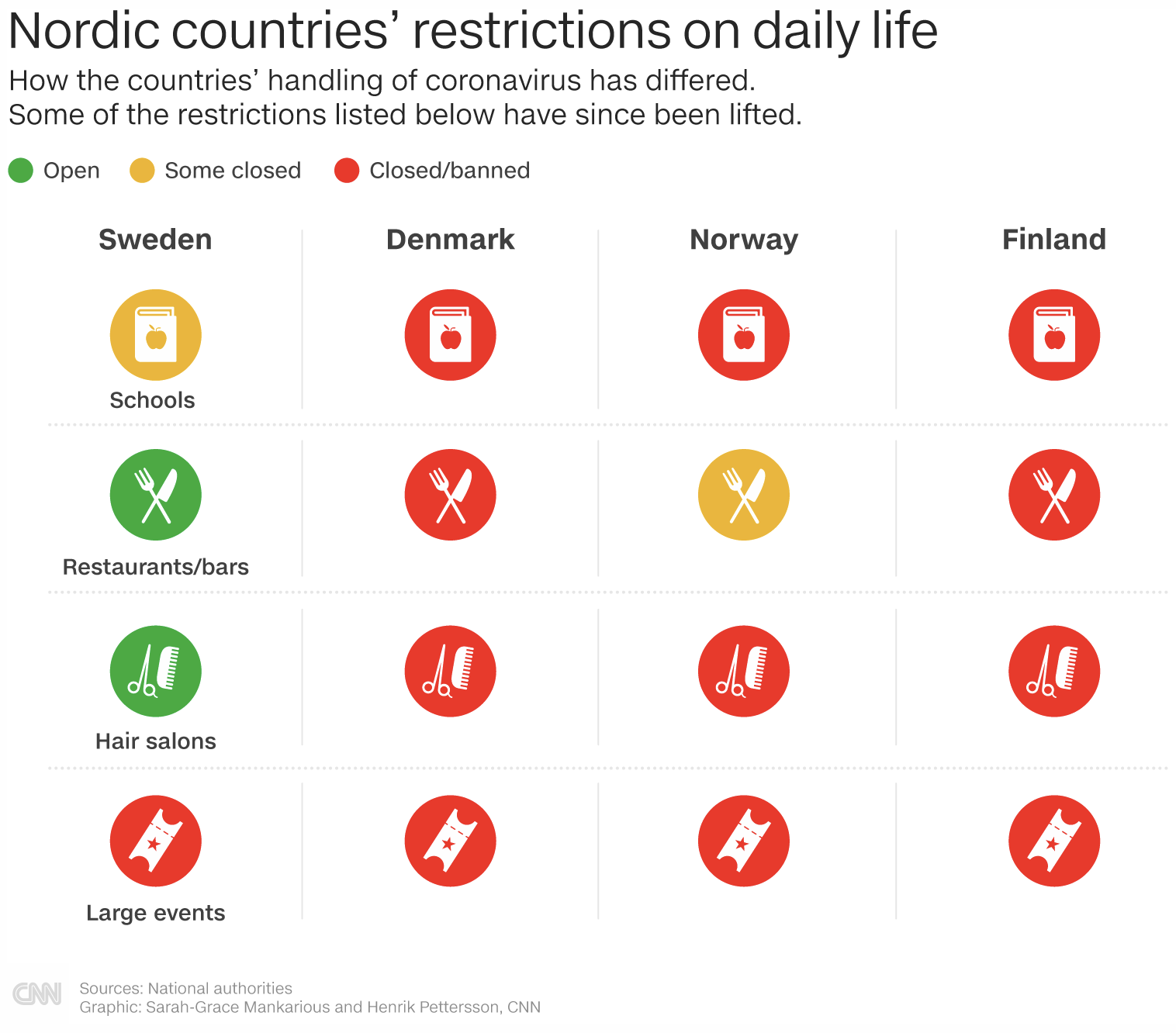
Sweden has been an outlier during the coronavirus outbreak.
The country has not joined many of its European neighbors in imposing strict limits on citizens' lives, and images of people heading to work on busy streets, or chatting at cafes and bars have raised eyebrows.
Younger children have continued to go to school, although universities and schools for older students have switched to distance learning. Businesses -- from hair salons to restaurants -- have remained open, although people have been advised to work from home where possible.
Among Nordic countries -- which share similar cultural, geographical and sociological attributes -- the contrast with Sweden is great.
From journalist Vanesse Chan in Hong Kong
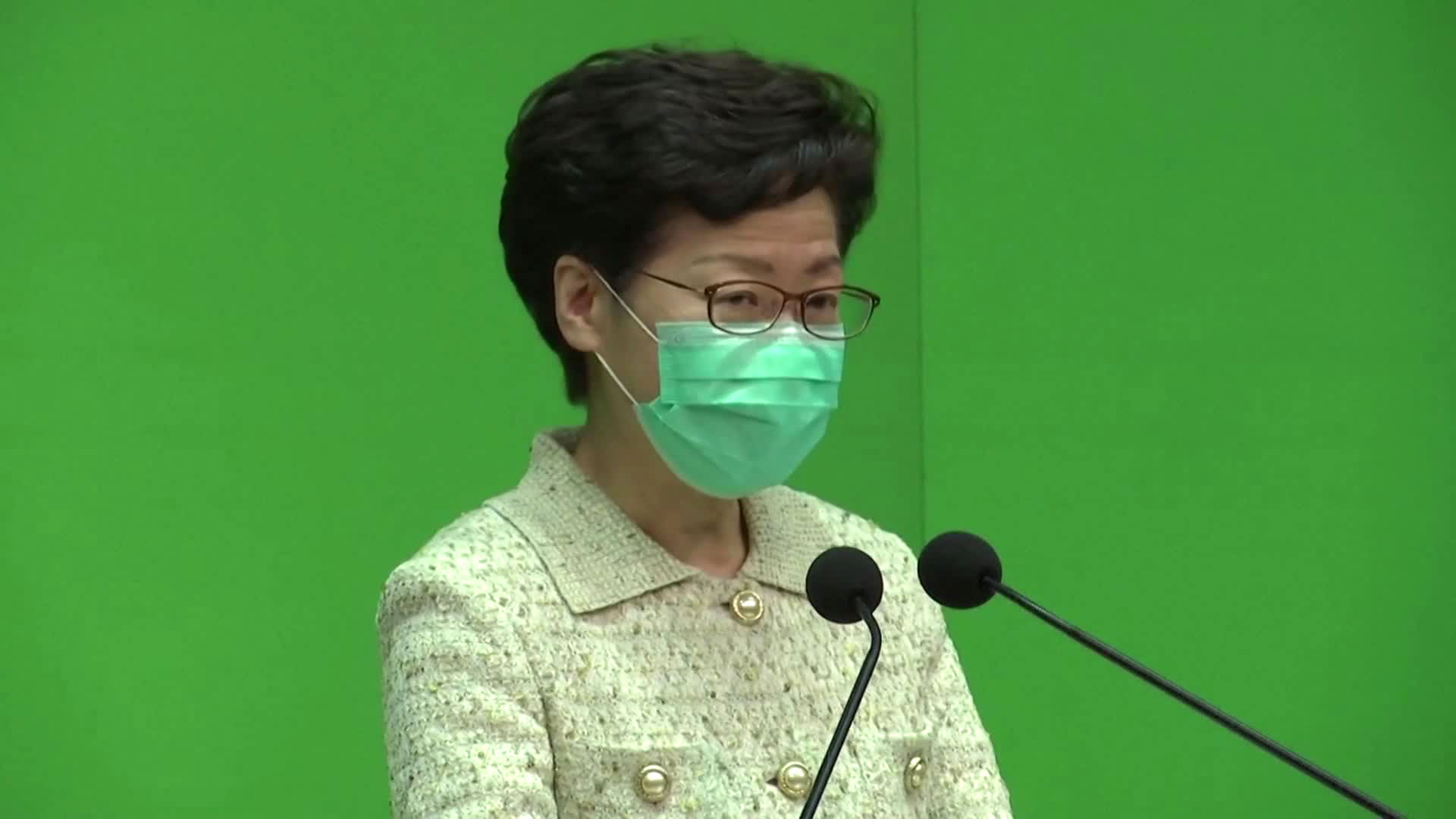
Hong Kong Chief Executive Carrie Lam speaks at a news briefing on Monday. Reuters
Hong Kong Chief Executive Carrie Lam announced that civil servants will start returning to work and public services will resume next Monday.
The government will also begin loosening some Covid-19 anti-epidemic measures, after the city reported no new confirmed cases for the fourth time in eight days on Monday.
In a news conference today, Lam described the approach of handling the pandemic as a “suppress and lift” policy.
From CNN's Carma Hassan
Dr. Chris Murray, director of the University of Washington’s Institute for Help Metrics and Evaluation, told CNN Tonight that they’ve adjusted their scientific model to increase the predicted death toll from the novel coronavirus to 74,000.
“Our forecast now is for 74,000 deaths. That’s our best estimate. The range is pretty wide because there’s a lot of unknown factors there, but our best estimate is going up, and we see these protracted, long peaks in some states,” Murray said.
“We’re also seeing signs in the mobility data that people are getting more active, and that’s also feeding into our assessment.”
From CNN’s Amanda Watts
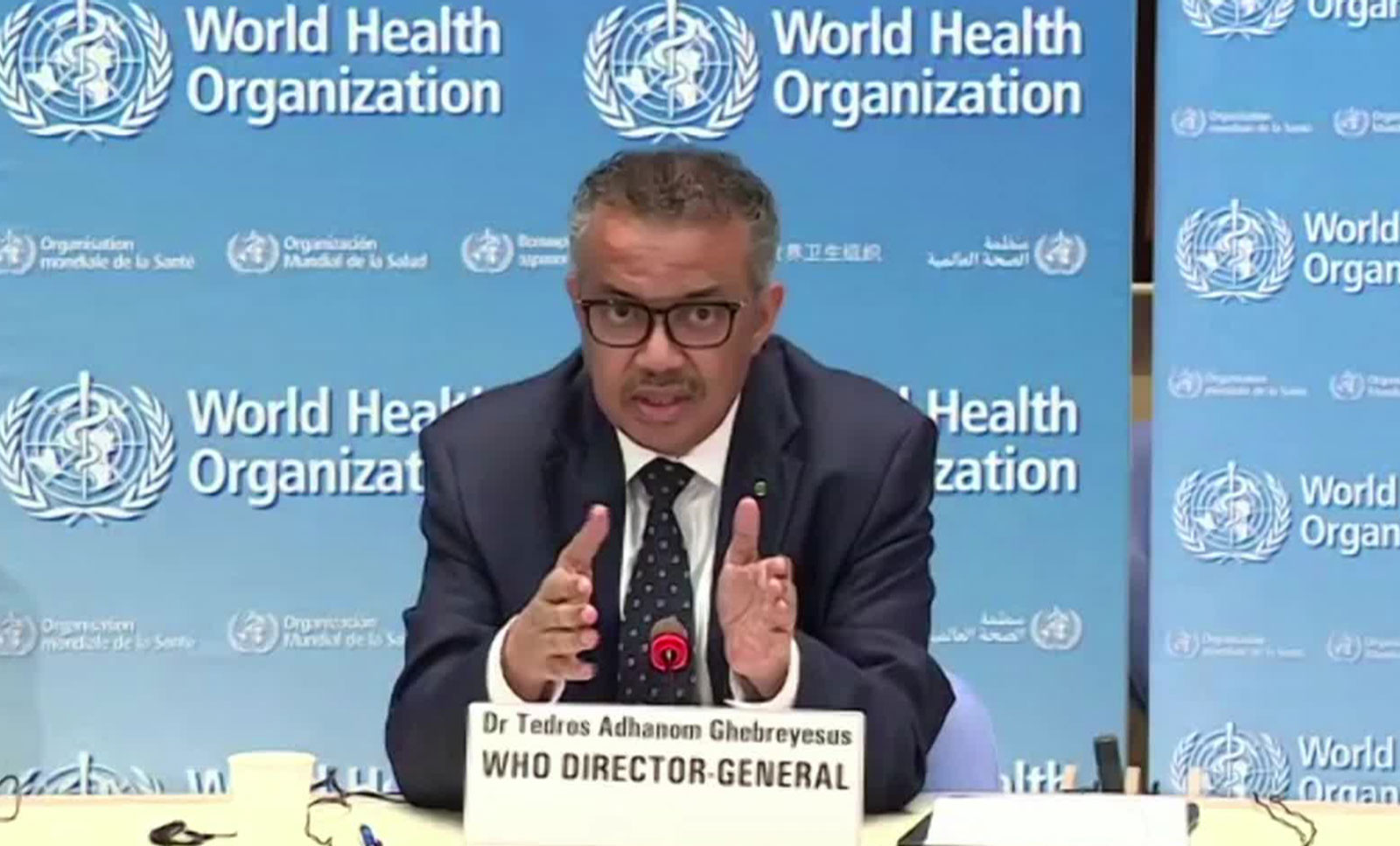
World Health Organization director-general Tedros Adhanom Ghebreyesus. WHO
World Health Organization director-general Tedros Adhanom Ghebreyesus said the agency “can only give advice, but one thing should be clear -- we don’t have any mandate to force countries to implement what we advise them.”
“It’s up to the countries to take our advice, or reject it,” Tedros said during a media briefing in Geneva on Monday, adding the organization gives advice based on “the best science and evidence.”
On January 30, the WHO declared the highest level of global emergency. “During that time, as you may remember, there were only 82 cases outside China,” he said.
"The world should have listened to WHO then, carefully,” Tedros said. “Every country could have triggered all its public health measures possible.”
At the time, the WHO advised the world to find, test, isolate and contract trace for each case.
From CNN's Jaide Garcia and Sol Han
New Zealand is "not out of the woods," Prime Minister Jacinda Ardern said, as the country entered its first day of transitioning to Alert Level 3 from the toughest lockdown restrictions of Level 4.
"As I have said before it is a recovery room of sorts to assess the incredible work that New Zealanders have done at level 4, to break the virus's chain of transmission and prevent further community outbreak," Ardern said in a news conference today.
Ardern said Alert Level 3 represents the move toward getting the country and its economy up and running again.
Source:https://edition.cnn.com/world/live-news/coronavirus-pandemic-04-28-20-intl/index.html